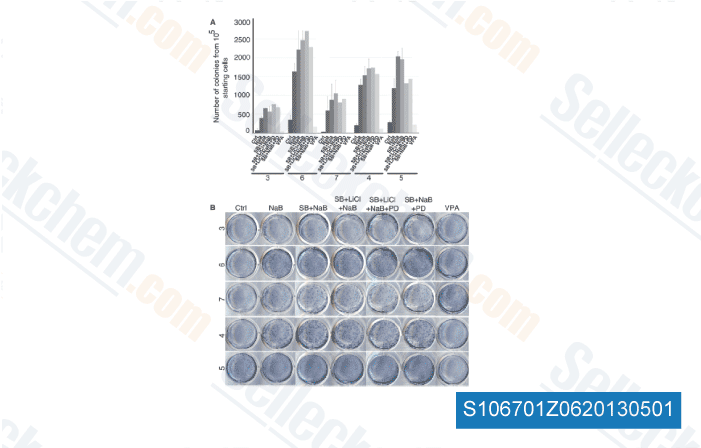To determine these molecules, we carried out a MSP induced cell shape primarily based display using a panel of twelve little che mical inhibitors in M RON cells. Intracellular proteins representing 10 signaling pathways this kind of as Erk1 two, PI three kinase, b catenin, Stat3, NF B and others had been tar geted. These signaling proteins are recognized to get involved in cell morphological adjustments and motility, Cell elongation index measured from spin dle like morphology was made use of to determine the effect of personal inhibitors, Prevention of MSP induced spindle like morphology was not observed in M RON cells handled with wortmannin, SB203580, SP600125, Cay10512, and S31 201, suggesting that sig naling from these pathways was not concerned in MSP induced EMT. A reasonable result, based upon adjustments in elongation index, was noticed when rapamycin, vismode gib, and XAV 939 had been applied, suggesting that signal ing from Hedgehog, Wnt b catenin, and FRAP mTOR pathways played a function in MSP induced EMT.
As expected, inhibition of RON and Erk1 two signals by CP one and PD98059, respectively, selleck absolutely blocked the impact of MSP, indicating the importance of the RON Erk1 2 pathway in regulating EMT phenotype. An interesting consequence was the end result of SL0101 mediated results, which GSK2126458 completely prevented MSP induced EMT. SL0101 can be a distinct inhibitor of RSK and regu lates many cellular activities, The observed results prompted us to find out if RSK is certainly a crucial determinant in RON mediated EMT. MSP induced RSK2 dissociation with Erk1 two and its phosphorylation in correlation with Erk1 2 activation RSK isoforms such as RSK1 or RSK2 associate with Erk1 two in quiescent cells, Dissociation among RSK and Erk1 two needs phosphorylation, To find out which RSK isoform is regulated by MSP, M RON cells were stimulated while in the presence or absence of U0126, an inhibitor that blocks RSK dissociation with Erk1 two, TGF b1 was utilised since the management.
RSK iso types linked  with Erk1 2 were determined by anti Erk1 2 mAb immunoprecipitation followed by Western blot evaluation applying anti RSK1 or RSK2 antibody. As shown in Figure 1A, RSK2 but not RSK1 was sponta neously associated with Erk1 2 in M RON cells cultured in DMEM containing 1% FBS. In contrast, interaction involving RSK1 and Erk1 two was not observed. It should be pointed out that RSK1 was expressed in M RON cells, nevertheless, Erk1 two was not detected in anti RSK1 immunoprecipitation. Following MSP stimulation, RSK2 Erk1 2 complex dissociated. TGF 1b also induced RSK2 Erk1 2 dissociation whilst its effect was moderate. However, in cells treated with U0126, MSP or MSP plus TGF b1 induced dissociation of RSK2 Erk1 two complicated was blocked. Very similar final results had been observed when immunoprecipitation was per formed employing anti RSK2 mAb, Taken collectively, these results suggested that MSP is capable of regulating RSK2 interaction with Erk1 two and TGF b1 exerts a comparable result.
with Erk1 2 were determined by anti Erk1 2 mAb immunoprecipitation followed by Western blot evaluation applying anti RSK1 or RSK2 antibody. As shown in Figure 1A, RSK2 but not RSK1 was sponta neously associated with Erk1 2 in M RON cells cultured in DMEM containing 1% FBS. In contrast, interaction involving RSK1 and Erk1 two was not observed. It should be pointed out that RSK1 was expressed in M RON cells, nevertheless, Erk1 two was not detected in anti RSK1 immunoprecipitation. Following MSP stimulation, RSK2 Erk1 2 complex dissociated. TGF 1b also induced RSK2 Erk1 2 dissociation whilst its effect was moderate. However, in cells treated with U0126, MSP or MSP plus TGF b1 induced dissociation of RSK2 Erk1 two complicated was blocked. Very similar final results had been observed when immunoprecipitation was per formed employing anti RSK2 mAb, Taken collectively, these results suggested that MSP is capable of regulating RSK2 interaction with Erk1 two and TGF b1 exerts a comparable result.
AMPK Signal
AMPK is formed by α, β, and γ subunits
